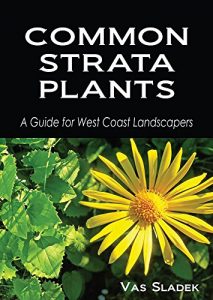Common Strata Plants: A Guide for West Coast Landscapers
I finally realized one of my dream projects: to self-publish an e-book for new landscapers. Since the internet has revolutionized publishing this is a great time to put your stuff out into the world. Are you not convinced yet? Then read James Altucher’s blog on self-publishing.
Why?
Why publish an e-book with common strata plants? Because it’s part of my job to train new landscapers in the field. And plant identification skills are one big part of that training. After answering the same plant questions over and over, I had an idea. I realized that we could tweak it by putting the most common plant species we see on our strata complexes into one picture file. And then publishing it in electronic e-book format and making it available for download online.
Two key ideas
- Repetition: Plants on our strata complexes tend to repeat and that works in our favour. Once the new worker learns to recognize shrubs like Viburnum davidii he will see them on other sites.
- The list: The plant list I put together comes from strata sites and represents, what I believe, is a good starting point. So just take the list and learn it. There’s no need to consult thick reference manuals or spend time making your own list.
Testing!
This was an important first run test because I have other projects in mind. So stay tuned by checking this blog. To read how I self-published the e-book, click here. Of course, the trick is to get new landscapers to download and flip through the e-book. I think employer incentives might help.
New workers are usually busy enough with machines and bedwork. Plant knowledge comes later with experience. But let’s consider why plant ID is important.
a) Bedwork or finesse work can be completed faster when you can easily distinguish between plants and unwanted weeds. I’ve seen many new landscapers paralyzed in gardens because they weren’t sure what was what. If you’re not sure, don’t pull it. Don’t panic, just get better.
b) Landscape design requires exceptional plant knowledge. One day the new landscape worker might move up and pursue design work.
c) Nurseries only use botanical names so if you know your plants you can easily place orders and check them for accuracy. Always keep plant tags and study them.
d) Gardening, like design, depends on exceptional plant ID skills. I found this out when I apprenticed under my city gardener boss. Her plant ID knowledge was unbelievable. Eventually I found out where city gardeners make their money: in annual bed displays. The kicker is that when they meet they order new plants for next year by grouping their plant orders. You need knowledge and experience for this task. I respect all city gardeners for this.
e) Clients will stop you to ask questions and if you’re ready, you will impress them with your knowledge. As Red Seal journeyman on site I inevitable get called over by workers who are happy to deflect client questions to me. Great! I always take the heat.
f) One day your boss or client will take you for a site walk and ask for ideas. There won’t be time for Google searches. You have to suggest plants right there, on the spot. That can be stressful but not if you know some plants.
Conclusion
The plant picture book can be used by new landscapers as a starting point; and also by strata managers and strata unit owners who may wonder what’s growing on their sites. Knowing plant names makes communication with landscapers easier.
Common strata plants: A guide for West Coast Landscapers by Vas Sladek





